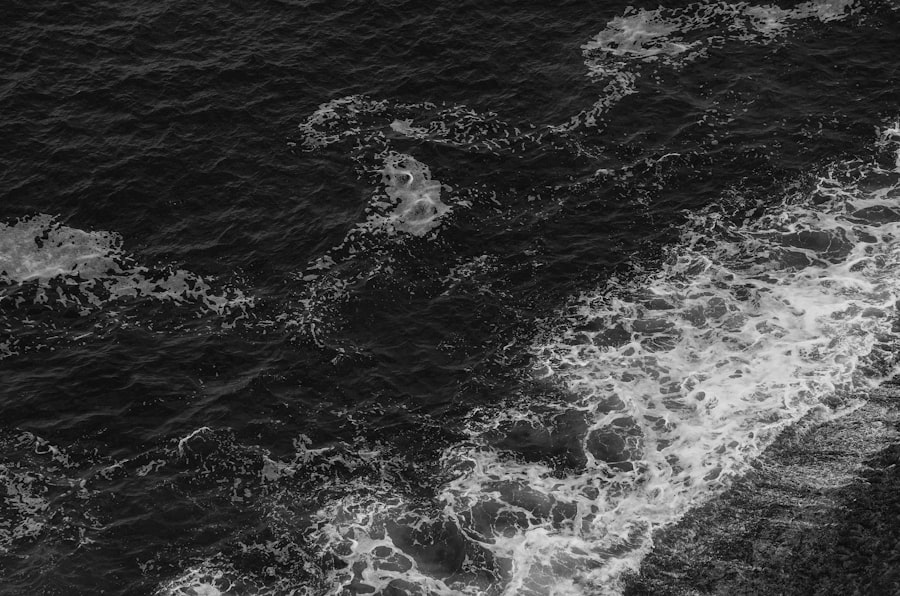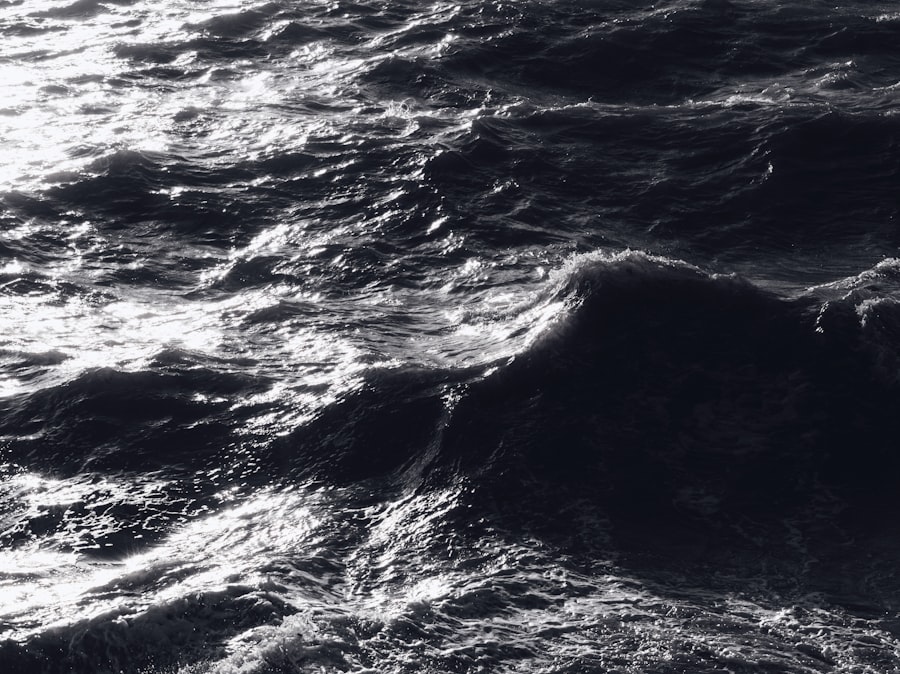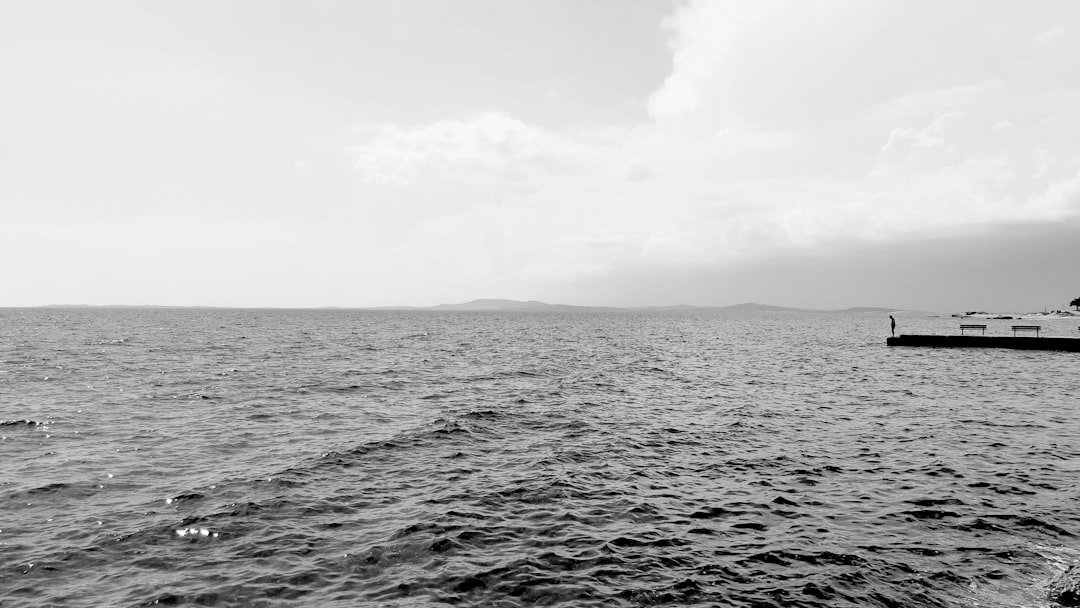The Drake Passage, a body of water situated between the southern tip of South America and Antarctica, is renowned for its tumultuous seas and unpredictable weather. Spanning approximately 600 miles, this passage serves as a critical maritime route for vessels traveling to and from the Antarctic region. Named after the English explorer Sir Francis Drake, who navigated these waters in the late 16th century, the Drake Passage is often characterized by its strong currents and high waves, making it both a formidable challenge and a thrilling adventure for seafarers.
The passage is not only significant for its navigational importance but also for its unique ecological characteristics. The convergence of the Atlantic, Pacific, and Southern Oceans creates a rich marine environment that supports a diverse array of wildlife. This area is known for its nutrient-rich waters, which attract various species of fish, seabirds, and marine mammals.
As such, the Drake Passage is not merely a route; it is a vibrant ecosystem that plays a crucial role in the health of the Southern Ocean.
Key Takeaways
- The Drake Passage is a body of water between South America’s Cape Horn and the South Shetland Islands of Antarctica, known for its rough seas and unpredictable weather.
- The best times to travel through the Drake Passage are during the Antarctic summer months of November to March when the weather is milder and wildlife is abundant.
- When preparing for the journey, it’s important to pack appropriate clothing for cold and wet conditions, as well as seasickness medication and travel insurance.
- Choosing the right vessel for the crossing involves considering factors such as size, stability, and amenities, as well as the experience and expertise of the crew.
- Safety precautions and emergency procedures should be familiarized with before embarking on the journey, including lifeboat drills and emergency communication protocols.
- The Drake Passage is home to diverse wildlife and natural attractions, including seabirds, whales, and icebergs, making it a unique and rewarding experience for nature enthusiasts.
- Navigational challenges and strategies in the Drake Passage require skilled and experienced crew, as well as modern technology and weather forecasting to ensure a safe and smooth journey.
- Tips for managing seasickness include staying hydrated, getting fresh air on deck, and focusing on the horizon, as well as using medication or alternative remedies as recommended by a healthcare professional.
- Packing essentials for the journey should include waterproof and windproof clothing, sturdy footwear, sunscreen, binoculars, and a camera to capture the stunning scenery and wildlife.
- Activities and excursions during the crossing may include wildlife watching, photography, educational lectures, and socializing with fellow passengers, as well as enjoying the unique experience of being at sea en route to Antarctica.
- Upon arrival, passengers can expect to disembark and begin their Antarctic adventure, whether it’s exploring the continent, participating in guided excursions, or continuing their journey to other destinations.
Best times to travel through the Drake Passage
Traveling through the Drake Passage is best undertaken during the austral summer months, which span from late October to early March. During this period, the weather tends to be milder, and the chances of encountering severe storms are significantly reduced. The summer months also coincide with the peak of wildlife activity, making it an ideal time for those interested in observing marine life and enjoying the stunning landscapes of Antarctica.
While conditions can still be unpredictable, travelers often find that the calmer seas during these months make for a more pleasant crossing. The longer daylight hours also provide ample opportunities for photography and exploration. However, it is essential to remain flexible with travel plans, as weather patterns can change rapidly in this region.
Those planning a journey through the Drake Passage should keep an eye on forecasts and be prepared for varying conditions.
Preparing for the journey

Preparation is key when embarking on a journey through the Drake Passage. Travelers should begin by researching their options and understanding what to expect during the crossing. This includes familiarizing themselves with the potential challenges posed by the passage’s notorious weather and sea conditions.
Knowledge about the journey can help mitigate anxiety and enhance the overall experience. In addition to mental preparation, physical readiness is equally important. Travelers should ensure they are in good health and capable of handling the rigors of sea travel.
It may be beneficial to consult with a healthcare provider regarding any pre-existing conditions or concerns about seasickness. Furthermore, packing appropriate clothing and gear is essential to ensure comfort during the journey. Layering clothing is advisable, as temperatures can fluctuate dramatically on the open sea.
Choosing the right vessel
| Factors to Consider | Importance |
|---|---|
| Vessel Size | High |
| Capacity | High |
| Speed | Medium |
| Cost | High |
| Efficiency | High |
Selecting the right vessel for a journey through the Drake Passage can significantly impact the overall experience. Various types of ships are available, ranging from large cruise liners to smaller expedition vessels. Larger ships often provide more amenities and stability in rough seas, while smaller vessels may offer a more intimate experience and greater access to remote areas.
When choosing a vessel, travelers should consider their priorities—whether they value comfort, adventure, or wildlife viewing opportunities. Additionally, it is crucial to research the ship’s safety record and crew experience. A well-trained crew can make all the difference in navigating the challenges posed by the Drake Passage.
Ultimately, selecting a vessel that aligns with personal preferences will enhance the journey and create lasting memories.
Safety precautions and emergency procedures
Safety should always be a top priority when traveling through the Drake Passage. Before embarking on their journey, travelers should familiarize themselves with safety protocols and emergency procedures specific to their vessel. This includes understanding how to use life jackets, emergency beacons, and other safety equipment onboard.
In addition to knowing emergency procedures, travelers should also be aware of their surroundings and maintain communication with crew members. It is advisable to participate in safety drills conducted by the crew upon boarding. These drills provide valuable information on what to do in case of an emergency and help instill confidence in passengers regarding their safety during the crossing.
Wildlife and natural attractions

One of the most captivating aspects of traveling through the Drake Passage is the opportunity to witness an array of wildlife and natural attractions. The waters are teeming with life, including various species of whales such as humpbacks, orcas, and minke whales. Additionally, seabirds like albatrosses and petrels can often be seen soaring above the waves, providing a breathtaking spectacle for nature enthusiasts.
The surrounding landscapes are equally impressive, with towering icebergs and dramatic mountain ranges that define Antarctica’s rugged beauty. Travelers may have opportunities to explore these natural wonders through guided excursions or onboard lectures that enhance their understanding of this unique environment. The chance to observe wildlife in its natural habitat adds an unforgettable dimension to any journey through the Drake Passage.
Navigational challenges and strategies
Navigating through the Drake Passage presents several challenges due to its unpredictable weather patterns and strong currents. The passage is known for its rough seas, which can create difficulties for even experienced mariners. To successfully traverse these waters, vessels must employ effective navigational strategies that account for changing conditions.
One common strategy involves closely monitoring weather forecasts and adjusting course as needed to avoid severe storms or high waves.
Understanding tidal patterns and ocean currents also plays a crucial role in successful navigation.
By employing these strategies, vessels can enhance their chances of a smooth crossing while ensuring passenger safety.
Tips for managing seasickness
Seasickness is a common concern for travelers embarking on a journey through the Drake Passage. The combination of rolling waves and unpredictable weather can lead to discomfort for many passengers. However, there are several strategies that individuals can employ to manage seasickness effectively.
One effective approach is to choose accommodations in the middle of the ship where motion is less pronounced. Additionally, travelers may benefit from over-the-counter medications designed to alleviate symptoms of motion sickness. Ginger products—such as ginger tea or candies—are also known for their soothing properties and can be helpful during rough crossings.
Staying hydrated and consuming light meals can further mitigate feelings of nausea.
Packing essentials for the journey
Packing appropriately for a journey through the Drake Passage is essential for ensuring comfort and enjoyment during the crossing. Travelers should prioritize layering clothing to accommodate fluctuating temperatures on board and during excursions. Waterproof outer layers are particularly important given the potential for splashes from waves or rain.
In addition to clothing, travelers should consider bringing personal items such as sunscreen, sunglasses, and hats to protect against sun exposure during outdoor activities. Binoculars are also highly recommended for wildlife viewing opportunities while at sea. Finally, it is wise to pack any necessary medications or personal items that may be needed throughout the journey.
Activities and excursions during the crossing
While crossing the Drake Passage may primarily involve navigating turbulent waters, there are numerous activities and excursions available to enhance the experience. Many vessels offer onboard lectures led by experts in marine biology or Antarctic history, providing valuable insights into the region’s ecology and significance. Additionally, some ships may organize guided excursions once they reach calmer waters or nearby islands.
These excursions can include kayaking among icebergs or visiting research stations where travelers can learn about ongoing scientific studies in Antarctica. Engaging in these activities not only enriches the journey but also allows passengers to connect more deeply with this extraordinary environment.
Arrival and next steps
Upon successfully navigating through the Drake Passage, travelers will arrive at their destination—often one of Antarctica’s stunning coastal regions or research stations. This marks an exciting moment in their journey as they prepare to explore one of Earth’s last frontiers. Once ashore, travelers can participate in various activities such as guided hikes on glaciers or wildlife watching excursions on land.
It is essential for visitors to adhere to guidelines set forth by environmental organizations to protect this fragile ecosystem during their explorations. As they embark on this new chapter of their adventure, travelers will undoubtedly carry with them memories of their crossing through one of the world’s most iconic maritime passages—the Drake Passage—forever etched in their minds as a testament to nature’s power and beauty.
In exploring the treacherous waters of the Drake Passage, one might find it beneficial to delve into related resources that provide a broader understanding of this infamous maritime route. A particularly insightful article can be found on MyGeoQuest, which offers a comprehensive overview of the geographical and historical significance of the Drake Passage. For those interested in expanding their knowledge further, I recommend checking out this related article on MyGeoQuest’s website. You can access it by clicking on the following link: com/sample-page/’>Drake Passage Overview.
This resource provides valuable context and additional information that complements the details found in the Drake Passage PDF.
WATCH NOW! Drake Passage: Earth’s Deadliest Waters Revealed
FAQs
What is the Drake Passage?
The Drake Passage is a body of water located between the southern tip of South America and the northern tip of the Antarctic Peninsula. It connects the Atlantic and Pacific Oceans.
Why is the Drake Passage significant?
The Drake Passage is known for its rough seas and strong winds, making it one of the most challenging and unpredictable waterways to navigate. It is also an important region for studying oceanography and climate due to its role in the circulation of the world’s oceans.
What is the wildlife like in the Drake Passage?
The Drake Passage is home to a diverse range of marine wildlife, including whales, seals, and various seabird species. It is also a popular area for birdwatching and whale watching.
Are there any research stations in the Drake Passage?
There are several research stations located on the islands surrounding the Drake Passage, where scientists conduct studies on climate, oceanography, and wildlife. These stations also serve as bases for Antarctic expeditions.
Can tourists visit the Drake Passage?
Yes, there are expedition cruises that offer tours through the Drake Passage, allowing tourists to experience the unique wildlife and dramatic landscapes of the region. However, the crossing can be rough, so it is not recommended for those prone to seasickness.
